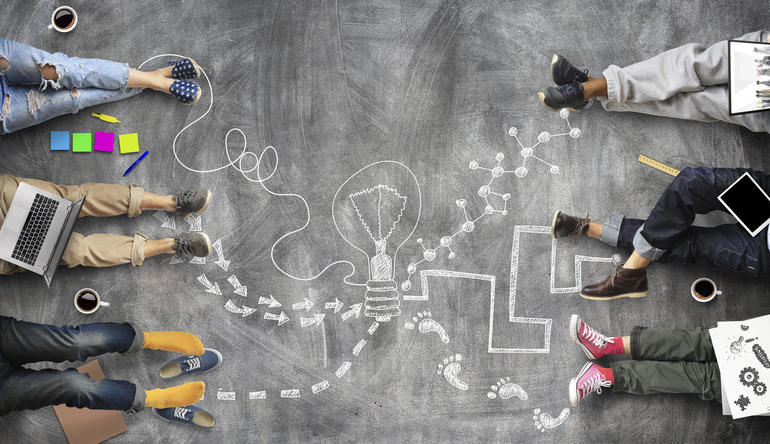Learn about brain health and nootropics to boost brain function
9 super-smart problem solvers take on bias in AI, microplastics, and language lessons for chatbots

Image: Dorian2013/Getty Images/iStockphoto Just when the problems of the world become overwhelming and unsolvable, someone publishes a list of smart people finding solutions to these challenges. MIT’s 2020 35 Under 35 list does just that. The MIT Technology Review has been publishing this list for 20 years. There were more than 500 nominees in this year’s contest. Twenty-five judges reviewed the list of 100 semi-finalists to select the final 35 people.
SEE: Guide to Becoming a Digital Transformation Champion (TechRepublic Premium)
These nine honorees come from each category in the list–inventors, entrepreneurs, pioneers, humanitarians, and visionaries–and have a specific focus on technology. A read/write brain interface
Dongjin Seo, Neuralink, is using his engineering expertise to build a connection between human brains and computers . Seo started his machine-brain research with tiny electronic sensors that could be sprinkled into an animal’s brain and controlled with acoustic waves. Now he is developing ultra-thin electrodes that could connect a computer to a brain. He is designing the circuit board and chips that would run a low-power wireless computer that would fit into a hole cut into the skull. Stretchy microchips
Sihong Wang, University of Chicago, started his study of rubbery polymers at Stanford University with Zhenan Bao, a pioneer in the field of new form factors for microchips. Wang has developed a new way to manufacture circuits to make them more flexible . He is using nanoconfinement to build layered polymer circuits to produce circuits that can be stretched to twice their normal length and still perform as expected. Removing the racial and gender bias in AI
Inioluwa Deborah Raji, AI Now Institute, is taking on the challenge of racism and bias in the data sets that train machine learning algorithms . Her goal is to create a data set that could be used to assess commercial face recognition systems for gender and racial bias. Testing data for facial recognition systems often lacks black and brown faces. She collaborated with MIT researcher Joy Buolamwini to evaluate facial recognition software from Microsoft, IBM, and Megvii. They found that the worst performing software identified the gender of dark-skinned women 34.4% less accurately than the gender of light-skinned men. Her work led the companies to change how they trained their systems. Her research also influenced the US National Institute of Standards and Technology to include a test for racial bias in its annual audit of face recognition algorithms. Raji also worked with Google to build an internal audit process for artificial intelligence (AI) projects to check for bias before the products are released. Nanomaterial that heats and cools
Lili Cai, University of Illinois at Urbana-Champaign, incorporated the infrared radiation that human bodies emit into the design of two fabrics that can heat or cool the wearer by blocking or transmitting the radiation. The metallized polyethylene textile can keep people about 7 degrees C (44.6 degrees Fahrenheit) warmer. Her cooling fabric uses a nanocomposite material to cool a person’s body by more than 10 degrees Celsius. Cai’s other innovation is the ability to produce the fabric in many colors to make the clothes look as normal as possible. Language lessons for chatbots
Jiwei Lei, Shannon.AI and Zhejiang University, is exploring new applications for neural networks and natural-language processing to help chatbots conduct smarter conversations. Lei is using deep reinforcement learning to make it easier for algorithms to understand grammar and meaning in human language. After studying at Peking University, Cornell University, Carnegie Mellon University, and Stanford University, Lei founded a natural-language processing startup in Beijing with $20 in venture capital funding. Google and Facebook have used his work to improve their chatbots. Energy efficient artificial intelligence
Manuel Le Gallo, IBM Research, wants to reduce the high electricity bill that comes with training and running the algorithms that power artificial intelligence algorithms, including natural-language processing and image recognition models. Running one model can emit as much carbon as five American cars. Le Gallo is working on a system that uses memory to process data that keeps the required accuracy but dramatically cuts power consumption. Le Gallo and his team are testing a new system that uses only 1% of the energy that a traditional method uses. Digital twins for crops
Anastasia Volkova, Flurosat, wants to help farmers grow crops more efficiently with a combination of sensors, digital twins, AI and thermal cameras. She founded Flurosat to launch a service that can spot changes in crop health as soon as they begin . By treating problems sooner, farmers could reduce the use of pesticides and herbicides. A solution to the microplastics problem
Avinash Manjula Basavanna, Wyss Institute, Harvard University, is developing a bioplastic that can be produced at scale and can degrade in water . AquaPlastic is based on living materials and is flushable. The new material has many of the same qualities as plastic made from petroleum in terms of durability. 3D printing houses
Alex Le Roux, Icon, wants to cut the price of building a house in half. He created the Vulcan, an industrial-scale 3D printer that can print the walls of a house in 24 hours . The printer is 12-feet tall and uses a special concrete mix to build the walls. The company programs the home design ahead of time and the operator uses an app to program the printer. Icon built the first 3D-printed home in the US in 2018 and is building a village in Mexico for 50 families. Also see
Read more at www.techrepublic.com